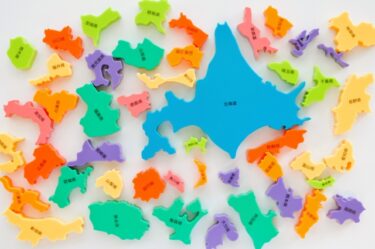Introduction:
Japan is known for its love of cute, or kawaii, characters. From internationally adored characters like Hello Kitty and Snoopy to regional mascots called yuru-chara, Japan’s cute culture permeates everyday life. But why do Japanese people gravitate toward these lovable designs? And are there similar trends in other countries? This article delves into Japan’s fascination with cute characters, its cultural roots, and how kawaii culture compares to global trends.
1. The Ubiquity of Cute Characters in Japan
Japanese cute characters, or yuru-chara, can be found everywhere—from school supplies and office materials to banks and police stations. These characters often serve as friendly symbols for businesses, government entities, and tourist sites, creating a welcoming atmosphere and promoting a sense of unity. Kawaii mascots, like Kumamon and Funassyi, represent local pride while also acting as powerful branding tools.
2. Why Japanese Culture Embraces Kawaii
Japan’s love of cuteness has deep cultural roots. Historically, Japan values harmony, gentleness, and non-confrontation—qualities often embodied in cute characters. Kawaii culture may also be tied to Japan’s admiration for innocence and nostalgia, evoking feelings of warmth and comfort. Cute characters provide a sense of relief and light-heartedness, particularly in a society where there is significant emphasis on order and responsibility.
3. Kawaii Culture Around the World
While Japan is famous for its cute culture, other countries have similar traditions. South Korea’s aegyo culture emphasizes cuteness in fashion, expressions, and design. In the United States, cartoon characters like Mickey Mouse and Snoopy have become cultural icons, though the American approach to cute characters tends to focus more on storytelling than on everyday branding. Scandinavian countries, with characters like Moomin, also embrace soft and innocent design, although on a smaller scale than Japan.
4. How Kawaii Culture Continues to Evolve
Japanese kawaii culture is constantly evolving, with new characters and merchandise regularly emerging. Today’s kawaii trends are also more inclusive and globally accessible, as international collaborations and social media help spread Japanese characters worldwide. Kawaii items have gone from being a national trend to a global phenomenon, connecting people through the universal appeal of charm and innocence.
HELLO KITTY
Hello Kitty, Sanrio’s flagship character, first appeared in 1974 and quickly gained worldwide popularity. Featuring a white kitten with an adorable bow, Hello Kitty has become a symbol of Japan’s kawaii (cute) culture. Her likeness is found on stationery, fashion items, and household goods across the globe. Notably, her “no mouth” design is intentional, so she can “speak from the heart” to express any feeling her fans may have.
Rilakkuma
Rilakkuma, a character from San-X, was introduced in 2003 to encourage relaxation in today’s busy world. This “relaxing bear” is loved for his laid-back personality and lounging poses, serving as a comforting presence in people’s lives. Rilakkuma’s popularity spans ages, with themed merchandise and even cafes, offering a place to unwind from everyday stress.
Sumikkogurashi
Sumikkogurashi, a group of shy and reserved characters who love staying in corners, was launched by San-X in 2012. This relatable theme resonates with fans, especially in Asia and North America. Sumikkogurashi has expanded into movies and animations, with cute merchandise available internationally.
My Melody
My Melody, another Sanrio character, debuted in 1975 and is a beloved bunny character, especially among young women. Like Hello Kitty, she is popular in Asia and the United States, and her soft colors and feminine designs make her a frequent choice for fashion items and accessories.
Totoro
Totoro, from Studio Ghibli’s film My Neighbor Totoro, has been adored worldwide since his first appearance in 1988. Totoro enjoys high recognition, especially in Europe and the United States, appealing to both children and adults. Beyond the film, Totoro plush toys and merchandise are sold globally.
5.The Significance and Role of Local Mascots
Many local mascots, or yuru-chara, are created to promote tourism and local products. These characters often reflect the region’s natural beauty, history, or cultural uniqueness. They play a significant role in regional revitalization by enhancing local branding through social media, events, and merchandise, bringing a sense of charm and unity to communities.
Kumamon
Kumamon, the official mascot of Kumamoto Prefecture, is a black bear with red cheeks and a friendly appearance. He was created in 2010 to promote tourism and local products, serving as Kumamoto’s “sales manager” to the nation and abroad. His cheerful and playful personality has made him widely popular. Much of the revenue from Kumamon-related products is used to support regional revitalization.
Funassyi
Funassyi, the unofficial mascot of Funabashi City in Chiba Prefecture, is an energetic “pear fairy.” Although not an official character, Funassyi’s lively performances and humorous personality caught the public’s eye around 2013, leading to many television appearances and events. Unlike official mascots, Funassyi is independently funded, often contributing to charity initiatives.
Sento-kun
Sento-kun, the mascot of Nara Prefecture, was created in 2008 to commemorate Nara’s 1300th anniversary. Designed with inspiration from the Great Buddha and deer, Sento-kun embodies Nara’s traditions and natural beauty. While his unique appearance received mixed reactions initially, Sento-kun is now a crucial figure in promoting tourism and cultural heritage in Nara.
Conclusion:
Japan’s affection for cute characters is a unique blend of cultural values and modern branding. Cute mascots and designs bring joy and comfort to people’s lives and allow for creative self-expression. While other countries share aspects of kawaii culture, Japan’s approach remains distinct, blending tradition and modernity in a way that makes kawaii characters beloved both locally and globally.







